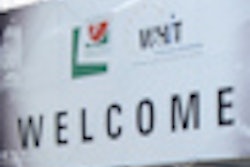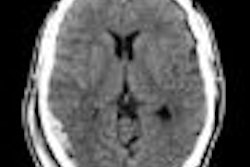VIENNA - As Google and Microsoft compete to develop personal health record services in the U.S., Finland is on a fast track to complete a Web-based national electronic medical records (EMR) archive. Scheduled for completion in 2009, the archive will provide near-instant access to medical records by individuals and medical professionals.
Yves Manieu, EMEA director of healthcare, described the Finnish Patient Record Archive project today at the Hospital Management Symposium co-sponsored by the 2008 European Congress of Radiology and European Hospital magazine.
"Europe has recently experienced two evolutions in healthcare: DICOM PACS and single portal electronic medical records access," Manieu said. Manieu described two models of IT and PACS implementation, the "New Deal" evolution and the "Invisible Hand" evolution. The first, adopted by France, the U.K., Ireland, and most Eastern European and Scandinavian countries, limits choice of IT and PACS products to a limited number of vendors. The latter allows for individual choice, as long as the vendors adhere to specified standards of interconnectability. Finland, Italy, Germany, and the Benelux countries have selected this mode, according to Manieu.
Finland initiated its first nationwide electronic healthcare initiative, the Finnish eHealth Roadmap, in the 1990s. It failed because a regional reference directory was utilized as its architecture. This proved to be proprietary, slow, expensive, and had no data-sharing functionality.
In 2002, the national archive project was awarded to Kela, Finland's national insurance company. Kela was tasked with the goals of creating a patient-centric, universal archive with easy and secure access. The project's objectives are to provide a single portal to access patient data and a limited number of data centers, and, by consolidating the country's healthcare IT investment, decrease costs and increase quality compared to reimplementation of regional centers.
Finnish medical centers use healthcare information systems and PACS from various vendors, and retaining this capital investment was important. "The requirement for any vendor is to guarantee technical interoperability," Manieu said.
"Semantics have proven to be difficult, and this was not anticipated," he said. A new organization, the National Research and Development Centre for Welfare and Health (STAKES), has been established to oversee the standardization of healthcare codes.
IT security represented 75% of the initial budget, according to Manieu. The country's national communications infrastructure is robust enough to accommodate the network traffic that is initially estimated, but it was necessary to add a secure messaging system to the infrastructure.
All Finnish citizens have an electronic ID card that will provide access to their own records. The ePrescription system requires a personal electronic signature by physicians as well. This will be the first component to go live, in June 2008.
The patient record archive is scheduled to be activated in February 2009, and DICOM images will be added in May 2009. Challenges have included "liberating information from existing data silos, and establishing policies and software programs to manage retention timeframes of different medical data," Manieu explained.
The Finnish Patient Record Archive is expected to store 3 petabytes (PB) of information in 2009, and contain 550 PB by 2025. Manieu predicts that it will be one of the largest medical records archives in the world.
"The archive is expected to advance clinical research in Finland because of its ability to offer national data mining to authorized researchers. This will be the first time that the records of a population of an entire country can be searched," Manieu said.
By the time of implementation in 2009, 50 million euros ($77.08 million U.S.) will be spent. After that, the annual cost will be 10 euros ($15) per annum per Finnish citizen.
By Cynthia Keen
AuntMinnie.com contributing writer
March 8, 2008
Related Reading
Standards drive Australian e-health initiative, March 16, 2007
EHR deployment presents familiar obstacles, February 27, 2007
U.S. takes steps to ramp up HIT efforts, February 23, 2007
U.K. seeks to speed EHR adoption, June 15, 2006
U.S. lags in implementing healthcare IT, May 17, 2006
Copyright © 2008 AuntMinnie.com



















